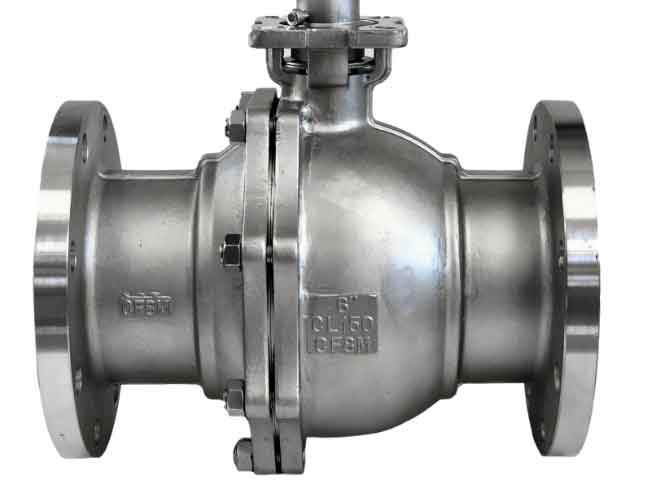Ball valves are widely used in various industries for controlling the flow of fluids. They are named after the ball-shaped disc inside the valve that controls the flow by rotating. In this discussion, we’ll explore the inner workings of ball valves, their functionality, and applications.

Functionality:
Ball valves consist of a hollow ball with a hole (bore) through its center. The ball is connected to a handle or actuator that rotates it to control the flow. When the ball’s hole is aligned with the valve body’s inlet and outlet, the valve is open, allowing fluid to flow. When the ball is rotated 90 degrees, the hole becomes perpendicular to the flow path, closing the valve and stopping the flow.
Ball valves can be categorized into two types based on the port design:
- Full port ball valves: In these valves, the bore of the ball is the same size as the pipeline, ensuring minimal flow restriction when fully open. They provide low pressure drop and high flow capacity, making them suitable for applications where flow rate is crucial.
- Reduced port (standard port) ball valves: These valves have a smaller bore than the pipeline, resulting in a reduced flow area when fully open. While they offer slightly higher pressure drop compared to full port valves, they are generally more economical and commonly used in applications where flow rate is not a primary concern.
Ball valves can also be classified based on the number of ports:
- Two-way or two-port ball valves: These valves have a single inlet and a single outlet, providing a simple on/off control of the fluid flow.
- Three-way or multi-port ball valves: These valves have multiple ports (inlet/outlet) and can redirect the flow between different combinations of ports. They are commonly used for diverting flow or mixing fluids.
Applications:
Ball valves are versatile and find applications in various industries, including:
- Oil and gas industry: Ball valves are extensively used in the oil and gas industry for pipeline control, shut-off, and isolation applications. They can handle high-pressure and high-temperature fluids, making them suitable for critical processes.
- Water and wastewater treatment: Ball valves are commonly employed in water treatment plants, sewage systems, and wastewater treatment facilities. They offer reliable shut-off capabilities, corrosion resistance, and easy maintenance.
- Chemical industry: Ball valves are utilized in chemical processing plants to control the flow of corrosive chemicals and hazardous fluids. They provide excellent chemical resistance and tight shut-off, ensuring safety and process integrity.
- Power generation: Ball valves are found in power plants for controlling steam, water, and fuel flow. They are used in applications such as boiler feedwater systems, cooling water systems, and fuel gas control.
- HVAC and plumbing systems: Ball valves are popular in heating, ventilation, air conditioning (HVAC) systems, and plumbing installations. They enable precise control of water flow, allowing for efficient temperature regulation and on/off control.
- Food and beverage industry: Ball valves with sanitary design are employed in food and beverage processing, providing hygienic fluid control. They are easy to clean, have minimal product entrapment areas, and comply with industry standards.
These are just a few examples of the broad range of applications for ball valves. Their robust construction, reliable operation, and versatility make them a popular choice in numerous industries where fluid control is essential.
Remember to consider specific requirements such as pressure, temperature, fluid type, and industry standards when selecting ball valves for particular applications.
